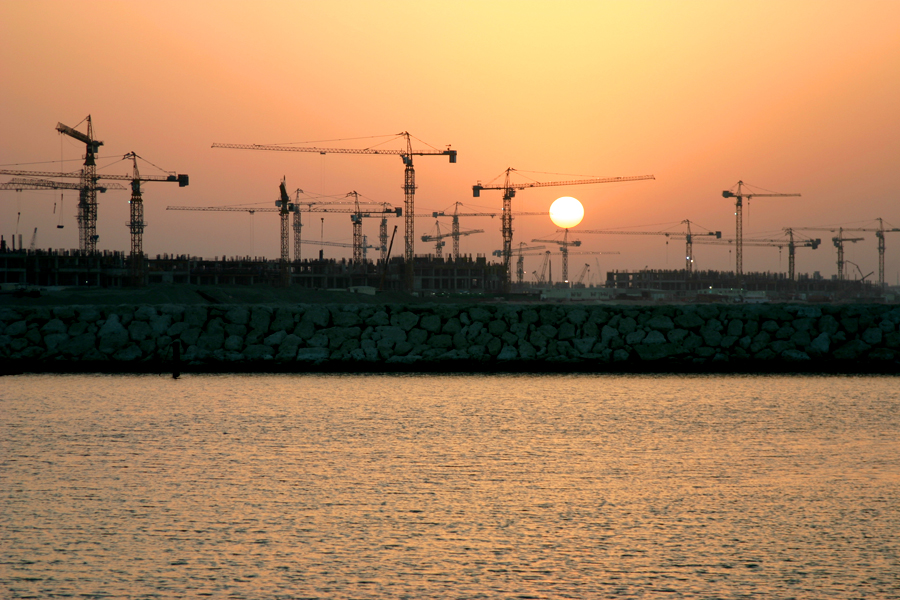Nonresidential construction spending inched up in April according to the June 2 release by the U.S. Census Bureau. This is the second consecutive month spending has increased following March’s upwardly revised spending report.
Nonresidential construction spending expanded by 0.4% on a monthly basis in April and has risen 3.9% on a year-over-year basis. Spending for the month totaled $570.6 billion on a seasonally adjusted, annualized basis.
“Unsurprisingly, nonresidential construction spending has improved with the weather,” said Associated Builders and Contractors Chief Economist Anirban Basu. “As a result of the unusually harsh winter weather, spending declines appeared large during the winter months and subsequent monthly gains have perhaps been a bit exaggerated as well. While the monthly numbers may be skewed, the year-over-year advance of 3.9% seems to realistically capture the rate of improvement in nonresidential construction spending.”
“The U.S. economy has recovered its momentum since the first quarter, suggesting that nonresidential construction’s steady recovery will remain in place,” said Basu. “Indeed, measures of business confidence have improved significantly and there are indications that capital spending is set to accelerate.”
Ten of 16 nonresidential construction subsectors posted increases in spending in April.
• Lodging construction spending is up 1.9% on a monthly basis and is up 16.9% on a year-over-year basis.
• Office-related construction spending grew by 1.7% in April and is up 20% from the same time one year ago.
• Construction spending in the transportation category expanded 3.4% on a monthly basis and has expanded 8% on an annual basis.
• Religious spending grew 1.8% for the month but is down 5.9% from the same time last year.
• Education-related construction spending gained 2.7% for the month and is up 2.9% on a year-over-year basis.
• Commercial construction spending rose 1.2% in April and is up 5.9% on a year-over-year basis.
• Sewage and waste disposal-related construction spending gained 4% for the month but has fallen 5.5% from the same time last year.
• Amusement and recreation-related construction spending expanded 4.4% on a monthly basis and is up 3.2% from the same time last year.
• Health care-related construction spending grew 0.9% for the month, but is down 6.2% on a year-over-year basis.
• Conservation and development-related construction spending expanded by 3.6% for the month and is up 19.7% on an annual basis.
Spending in six nonresidential construction subsectors declined in April.
• Spending in the water supply category fell 0.2% on the month and is down 12.8% from the same time last year.
• Manufacturing-related spending fell 1.1% on a monthly basis, but is up 6.7% on an annual basis.
• Highway and street-related construction spending fell 1.1% in April, but is up 4.8% compared to the same time last year.
• Communication construction spending was down 11.7% for the month but is up 21% from the same time one year ago.
• Public safety-related construction spending fell 0.9% on a monthly basis and has declined 12.4% on a year-over-year basis.
• Power construction spending dipped 1.2% for the month and was 1.6% lower than the same time one year prior.
Related Stories
| Jun 30, 2014
Research finds continued growth of design-build throughout United States
New research findings indicate that for the first time more than half of projects above $10 million are being completed through design-build project delivery.
| Jun 30, 2014
Narrow San Francisco lots to be developed into micro-units
As a solution to San Francisco’s density and low housing supply compared to demand, local firms Build Inc. and Macy Architecture each are to build micro-unit housing in a small parcel of land in Hayes Valley.
| Jun 30, 2014
Arup's vision of the future of rail: driverless trains, maintenance drones, and automatic freight delivery
In its Future of Rail 2050 report, Arup reveals a vision of the future of rail travel in light of trends such as urban population growth, climate change, and emerging technologies.
| Jun 30, 2014
4 design concepts that remake the urban farmer's market
The American Institute of Architects held a competition to solve the farmer's markets' biggest design dilemma: lightweight, bland canopies that although convenient, does not protect much from the elements.
| Jun 30, 2014
Harvard releases the State of the Nation’s Housing 2014
Although the housing industry saw notable increases in construction, home prices, and sales in 2013, household growth has yet to fully recover from the effects of the recession, according to a new Harvard University report.
| Jun 30, 2014
OMA's The Interlace honored as one of the world's most 'community-friendly' high-rises
The 1,040-unit apartment complex in Singapore has won the inaugural Urban Habitat award from the Council on Tall Buildings and Urban Habitat, which highlights projects that demonstrate a positive contribution to the surrounding environment.
| Jun 30, 2014
Work starts on Jean Nouvel-designed European Patent Office in the Netherlands [slideshow]
With around 80,000 sm and a budget of €205 million self-financed by the EPO, the complex will be one of the biggest office construction sites ever in the Netherlands.
| Jun 30, 2014
Growth of crowdfunding, public-private partnerships among top trends in architecture marketplace
A new report by the American Institute of Architects highlights several emerging trends in the architecture marketplace, including the growth of the P3 project delivery model and designing for health.
| Jun 30, 2014
Report recommends making infrastructure upgrades a cabinet-level priority
The ASCE estimates that $3.6 trillion must be invested by 2020 to make critically needed upgrades and expansions of national infrastructure—and avoid trillions of dollars in lost business sales, exports, disposable income, and GDP.
| Jun 30, 2014
Gen X, not Baby Boomers, spending the most money on homes [infographic]
It turns out that Generation X, who have the highest incomes of the three generations surveyed, are paying the highest home payments and tend to have the largest households.


















